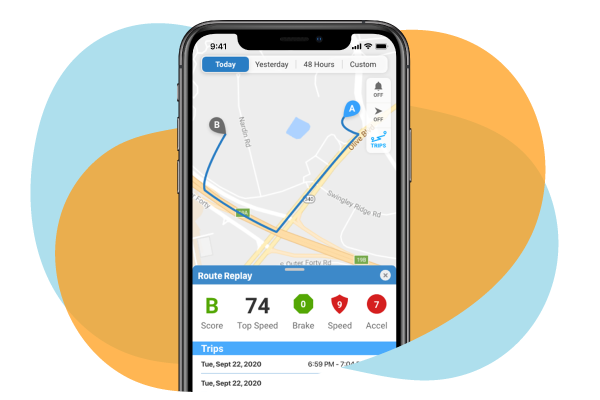
By Jana Rhodes / Posted November 7, 2016
Basic Car Maintenance Tips for Teens
If your teen or college student is driving a car equipped with MOTOsafety, they have an advantage when it comes to keeping their car in great condition. Maintenance schedules help busy families keep up with regular car maintenance and teach young adults responsibility. However, what if your teen doesn’t know what kind of maintenance needs to be scheduled?
Here are some tips on basic car maintenance to assist you and your new driver as you schedule the necessary tasks to keep your car running smoothly.
Oil Changes
The oil in your car keeps the engine cool and lubricated. This protects the parts from friction and reduces the need for repairs. However, car oil doesn’t last indefinitely. It breaks down over time and changes in consistency to a watery or gummy substance that can damage the engine. This is why you should change your oil regularly. You should consult your car manual for recommendations on how often to change the oil; however, every three to five thousand miles is most common. If you are using synthetic oil, it can last longer, and if your car is a newer model, it might keep up with the oil condition and alert you when a change is needed.
Battery Care
Few things are as frustrating as turning your car key and hearing silence. When your car engine doesn’t show a hint of starting, you most likely have a dead battery. This situation can be avoided with seasonal battery checks. When you have the charge and electrolyte level checked, you can have corrosion cleaned and removed from the cables as well. This will alert you to any potential problems in advance to keep you from being stranded on the road. It’s also important to remember to keep the lights and radio off when the car is not running. However, battery problems can occur even when you are cautious and proactive. You should always keep jumper cables in the car to be prepared for an emergency.
Fluid Checks
Your car has several fluids that keep it running in good condition, and these fluids should be checked regularly. Between oil changes, you should be checking your oil level at least once per month and adding any as needed. You should also check the power steering fluid once per month, although this fluid should rarely be low. Coolant should be checked and topped off at least a couple of times a year, usually at the beginning of the winter and summer seasons. Coolant will also need to be replaced about every two to three years. While you are checking the coolant, you should also check your wiper fluid to make sure it is full. Your brake fluid is part of a closed system and should never be low, but you should check the level and color whenever your oil is changed. When the color changes from golden to brown, it is time to have it replaced (usually every two years).
Driver Manual Recommendations
You should always consult your car manual for the recommended schedule on various parts. Tire rotation is usually recommended every ten thousand miles, but you should also know how to check your tires. Follow recommendations for spark plugs and other parts of a basic tune-up like your air filter (a good rule is to check the air filter when you change your oil). Your manufacturer will also have a replacement schedule for belts and other parts as well.
Keeping your car clean isn’t just about vanity. If your car is dirty, you are jeopardizing your safety because it is harder for other drivers to see you. Regular cleaning also prevents corrosion and the costly repair bill that can come with it. Don’t forget about the interior of your car – cleaning and protecting the dash and seats can prevent cracking and wear, also reducing the cost of restoration.
Whether you keep a manual checklist or enter these tips into your MOTOsafety maintenance schedule, management of these activities will improve the life of your car. Sit down with your teen to create a schedule so that they can learn important habits for taking care of their car.

- Installs in seconds
- Rates driver performance
- Monitors safe driving behaviors
- Shows location in real time
- Generates alerts for speeding and more
- Signals unauthorized usage

Next Post
Preparing for Emergencies: What to Do If Stranded
November 21, 2016Every driver dreads finding themselves on the side of the road with a car that has broken down. For teen drivers who are still learning the rules of…
Previous Post
What to Do in an Accident
October 24, 2016When you send your teen out on their own, you should send them well-trained to avoid accidents. However, you should also send them well-prepared to…


